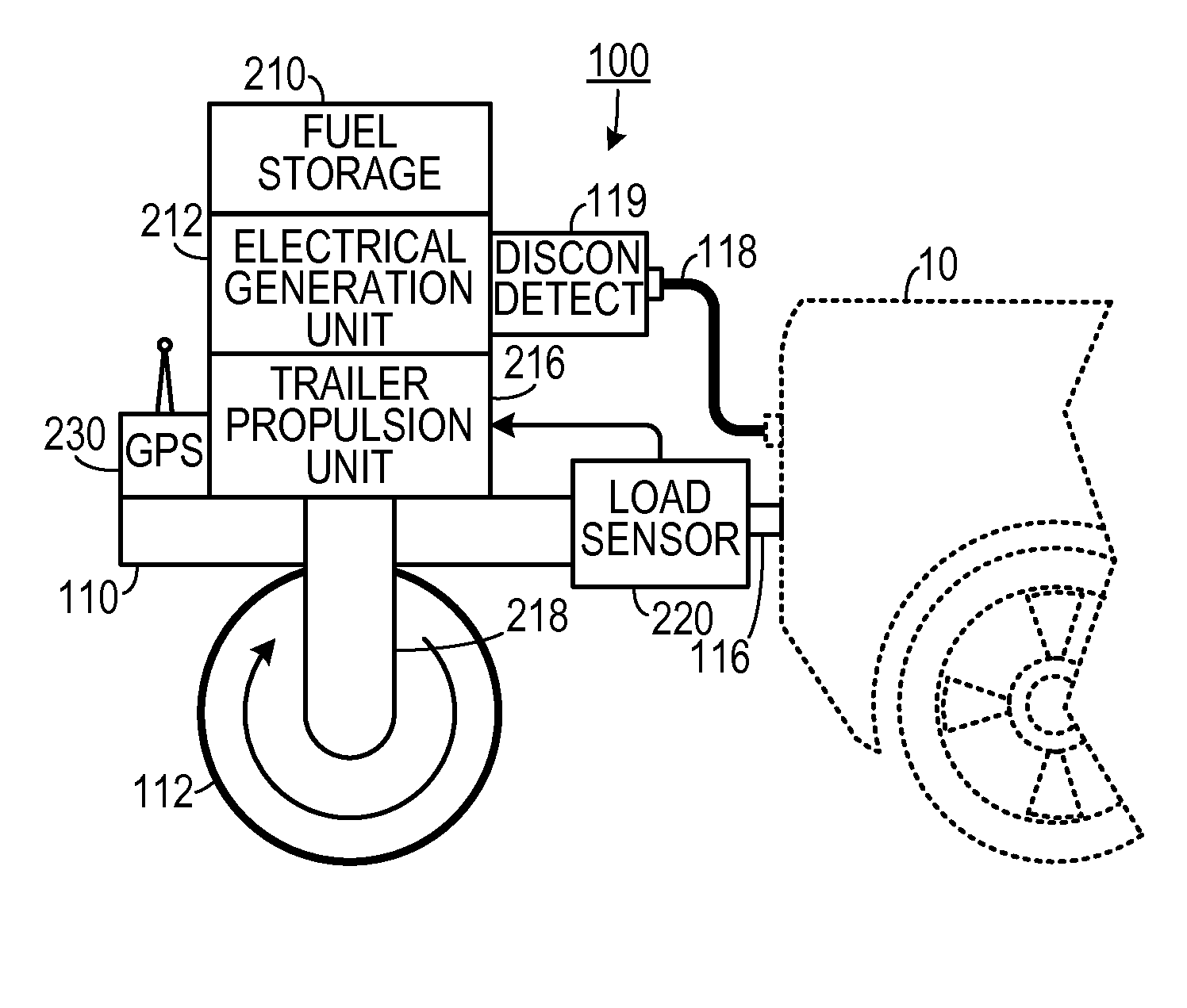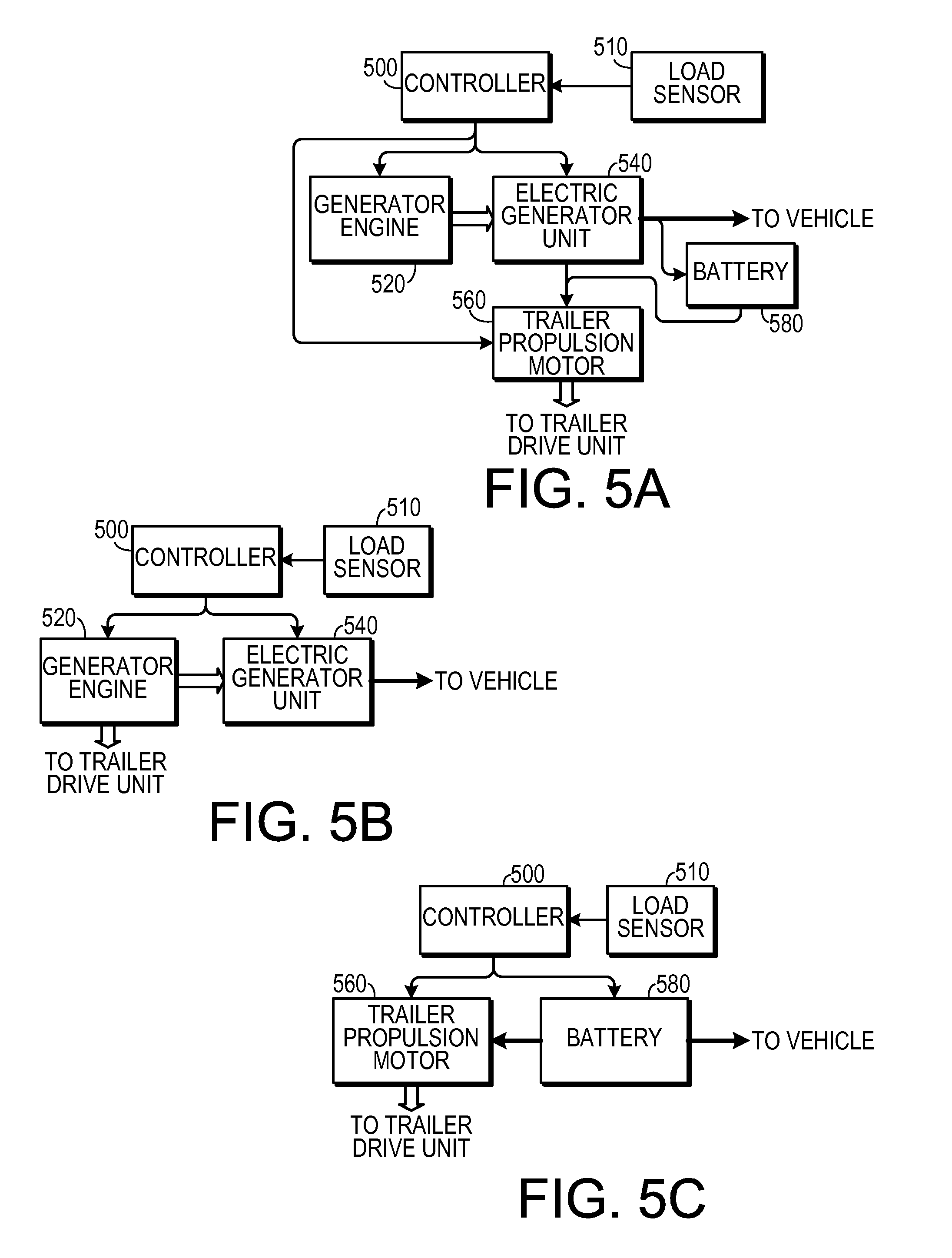Self Propelled Electric Vehicle Recharging Trailer
a self-propelled electric vehicle and charging trailer technology, applied in the direction of electric devices, propulsion parts, process and machine control, etc., can solve the problems of over-four hours of full recharge even at a 40 amp 220 volt class two charging station
- Summary
- Abstract
- Description
- Claims
- Application Information
AI Technical Summary
Problems solved by technology
Method used
Image
Examples
Embodiment Construction
[0037]A preferred embodiment of the invention is now described in detail. Referring to the drawings, like numbers indicate like parts throughout the views. Unless otherwise specifically indicated in the disclosure that follows, the drawings are not necessarily drawn to scale. As used in the description herein and throughout the claims, the following terms take the meanings explicitly associated herein, unless the context clearly dictates otherwise: the meaning of “a”, “an,” and “the” includes plural reference, the meaning of “in” includes “in” and “on.”
[0038]In one embodiment, the self propelled trailer has sensors that determine the turning, acceleration and deceleration load the trailer is presenting to the host vehicle. Onboard microprocessors and controllers instantly adjust the trailers motive drive to minimize or eliminate the trailers load to the host vehicle, thus improving the general performance of the combined vehicle. Additionally, if the host is an electric vehicle and ...
PUM
 Login to View More
Login to View More Abstract
Description
Claims
Application Information
 Login to View More
Login to View More - R&D
- Intellectual Property
- Life Sciences
- Materials
- Tech Scout
- Unparalleled Data Quality
- Higher Quality Content
- 60% Fewer Hallucinations
Browse by: Latest US Patents, China's latest patents, Technical Efficacy Thesaurus, Application Domain, Technology Topic, Popular Technical Reports.
© 2025 PatSnap. All rights reserved.Legal|Privacy policy|Modern Slavery Act Transparency Statement|Sitemap|About US| Contact US: help@patsnap.com



